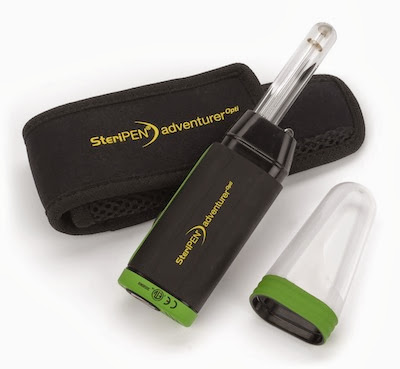When hiking in developing countries, take equipment that is low maintenance, lightweight and most importantly, durable. Quality replacement options are often thin on the ground.
Backpack

Mountain Laurel Designs Exodus Backpack | Made of Dyneema X | Cordillera Blanca Traverse, Peru, 2014
- Durability & Simplicity: When making your way to and from the trail, chances are you will be constantly getting in and out of dodgy old buses and pickup trucks. That being the case, your pack inevitably takes a beating. In such circumstances, you want a pack that is constructed of durable materials and that doesn’t have too many long straps and/or zippers. The tougher and simpler the pack, the less chance that anything will fail, break or get caught.
- Size: Limit yourself to a pack with a maximum capacity of 65 litres (approx. 4000 cubic inches). That should be sufficient to carry all necessary clothing and equipment, plus up to 5 days food. In addition to being more comfortable whilst out on the trail, a small pack has the following advantages whilst travelling in developing countries:
-
- More manageable when weaving your way around crowded public places;
-
- You can usually keep it with you at all times whilst on public transport. This minimises the chance of theft during those all-night bus and train rides, when larger luggage items are usually stored below or on top of the vehicle (i.e. out of sight).
Shelter
- Go with a Tent: I recommend carrying a tent rather than a tarp or bivy sack while hiking in developing countries. Local people will often be curious as to the cost of camping equipment. The privacy of a tent enables the hiker not to have all their gear on display. This helps in avoiding the inevitable question, “how much does this cost?” Such queries can be uncomfortable, as they emphasise the discrepancy in affluence between yourself and your hosts. If asked about the price of a particular piece of equipment, I often try to deflect the question by indicating that the item was a gift from my family.
- Theft can occur. Whenever possible try camping away from village centres. A small padlock for your tent zippers is also a good idea.
Stove
- The Options: Alcohol or Multi-fuel stoves are your best bets. They can be carried hassle free on planes and finding fuel is rarely a problem. Click here for a table of International fuel names.
- Multi-fuel stoves such as the MSR Whisperlite can run on practically anything. Petrol, white gas, kerosene. The downside? They are relatively heavy, and need to be regularly maintained in order to function at their optimum level. You will need to bring your ownspare parts, as finding replacements in Third world countries can often be difficult.
- Alcohol stoves are my preference. They are practically maintenance-free (just don’t step on them), super lightweight and denatured alcohol (methylated spirits) can be found throughout the world.
- Canister stoves are not practical for many developing countries. You cannot carry gas canisters on planes and outside of backpacking centres such as Kathmandu and Huaraz, it is often difficult to find replacement cartridges. In addition, most Third World countries do not have the means of recycling empty canisters, so environmentally speaking they are not a good idea.
Water Treatment
Whilst hiking and travelling in developing countries consider taking along a filter or UV purifier.
Many of these nations lack potable drinking water and recycling infrastructure. By taking along a water treatment device rather than constantly buying bottled water, you are minimizing your environmental impact during village or town stops. In case the filter or UV purifiers malfunction or break, always carry chemical treatment such as chlorine dioxide or iodine as a backup.

SteriPEN Adventurer
